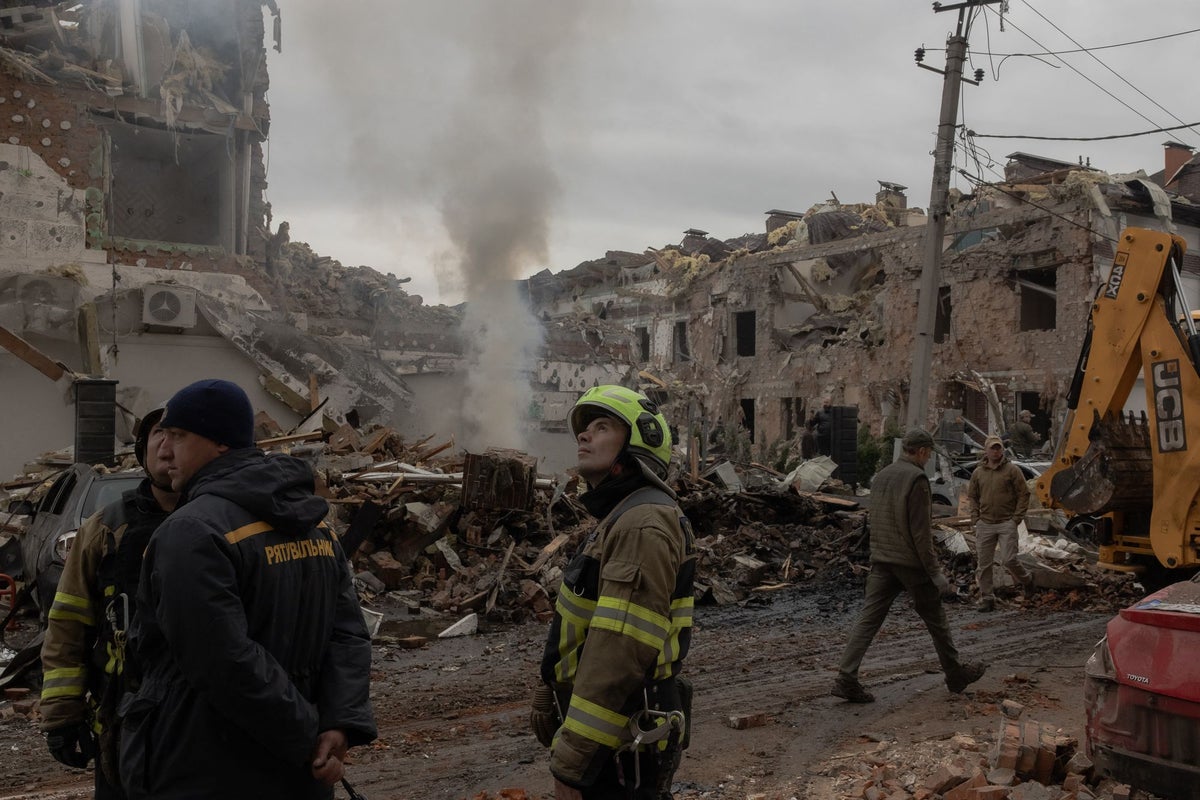Politics
Russia Launches Massive Drone and Missile Assault on Ukraine

A Russian drone and missile attack on Ukraine resulted in the deaths of four individuals, including a 12-year-old girl, and left at least 70 others injured. The assault, which spanned over 12 hours from the night into Sunday, marked a significant escalation in hostilities, with the capital, Kyiv, experiencing the most severe impacts. This incident represents the first large-scale bombardment since a similar attack in the previous month, which claimed at least 21 lives.
Ukrainian President Volodymyr Zelensky condemned the attack, describing it as “vile.” The offensive involved nearly 600 drones and several dozen missiles, striking various regions across Ukraine, including Zaporizhzhia, Khmelnytskyi, Sumy, Mykolaiv, Chernihiv, and Odesa. In Zaporizhzhia, three children were among the 34 injured, as reported by the regional governor, Ivan Fedorov.
Destructive Impact on Civilians
The attack left a profound mark on the civilian population. Residents recounted harrowing experiences. Ilona Kovalenko, a 38-year-old from Kyiv’s Solomianskyi district, described the chaos following the explosion that shattered windows in her building. She shared that her neighbor’s daughter, Oleksandra, tragically lost her life in the attack. “A neighbor kept knocking on our door. She was completely covered in blood and shouting, ‘help, save my daughter,’” Kovalenko recounted. “Sadly, she died on the spot. We are in shock, to be honest.”
In response to the escalating violence, President Zelensky vowed that Ukraine “will strike back” and urged the United States and Europe to reduce their imports of Russian oil and gas. Andrii Sybiha, Ukraine’s foreign minister, emphasized the importance of raising the costs for Russia regarding further escalations.
NATO’s Response and Regional Implications
As the situation unfolded, Denmark’s defense ministry reported observing drones over military locations for the second consecutive day. In light of these incidents, NATO announced plans to enhance its surveillance and military presence in the Baltic Sea region. NATO spokesperson Colonel Martin O’Donnel stated that the alliance would increase vigilance with new assets, including multiple intelligence, surveillance, and reconnaissance platforms, as well as at least one air-defense frigate.
Germany also announced it would provide military support to Denmark for the upcoming European Union summit in Copenhagen, following a request from the Danish government.
The Russian Ministry of Defense characterized the assault as a “massive” operation targeting military infrastructure, including airfields. This led to heightened military readiness in neighboring Poland, where fighter jets were deployed as a precaution against the ongoing hostilities.
The recent escalation of attacks against Ukraine underscores the urgent need for international cooperation and strategic responses to ensure regional stability and protect civilian lives.
-

 Health3 months ago
Health3 months agoNeurologist Warns Excessive Use of Supplements Can Harm Brain
-

 Health3 months ago
Health3 months agoFiona Phillips’ Husband Shares Heartfelt Update on Her Alzheimer’s Journey
-

 Science1 month ago
Science1 month agoBrian Cox Addresses Claims of Alien Probe in 3I/ATLAS Discovery
-

 Science1 month ago
Science1 month agoNASA Investigates Unusual Comet 3I/ATLAS; New Findings Emerge
-

 Science4 weeks ago
Science4 weeks agoScientists Examine 3I/ATLAS: Alien Artifact or Cosmic Oddity?
-

 Entertainment4 months ago
Entertainment4 months agoKerry Katona Discusses Future Baby Plans and Brian McFadden’s Wedding
-

 Science4 weeks ago
Science4 weeks agoNASA Investigates Speedy Object 3I/ATLAS, Sparking Speculation
-

 Entertainment4 months ago
Entertainment4 months agoEmmerdale Faces Tension as Dylan and April’s Lives Hang in the Balance
-

 World3 months ago
World3 months agoCole Palmer’s Cryptic Message to Kobbie Mainoo Following Loan Talks
-

 Science4 weeks ago
Science4 weeks agoNASA Scientists Explore Origins of 3I/ATLAS, a Fast-Moving Visitor
-

 Entertainment4 months ago
Entertainment4 months agoLove Island Star Toni Laite’s Mother Expresses Disappointment Over Coupling Decision
-

 Entertainment3 months ago
Entertainment3 months agoMajor Cast Changes at Coronation Street: Exits and Returns in 2025









